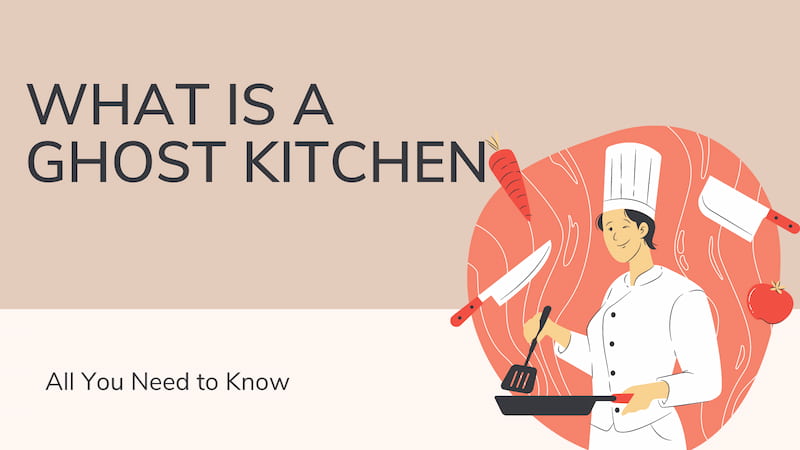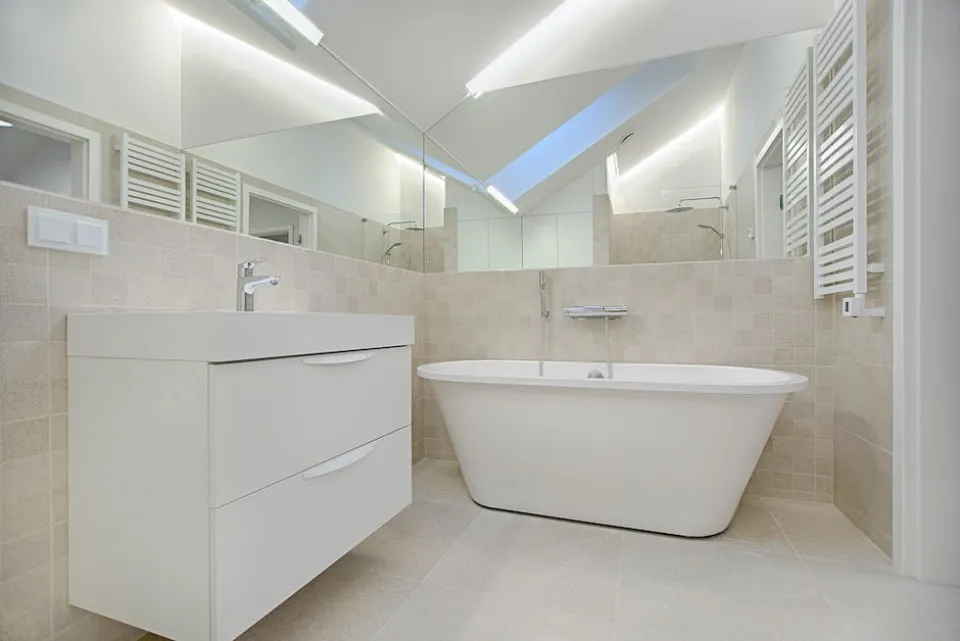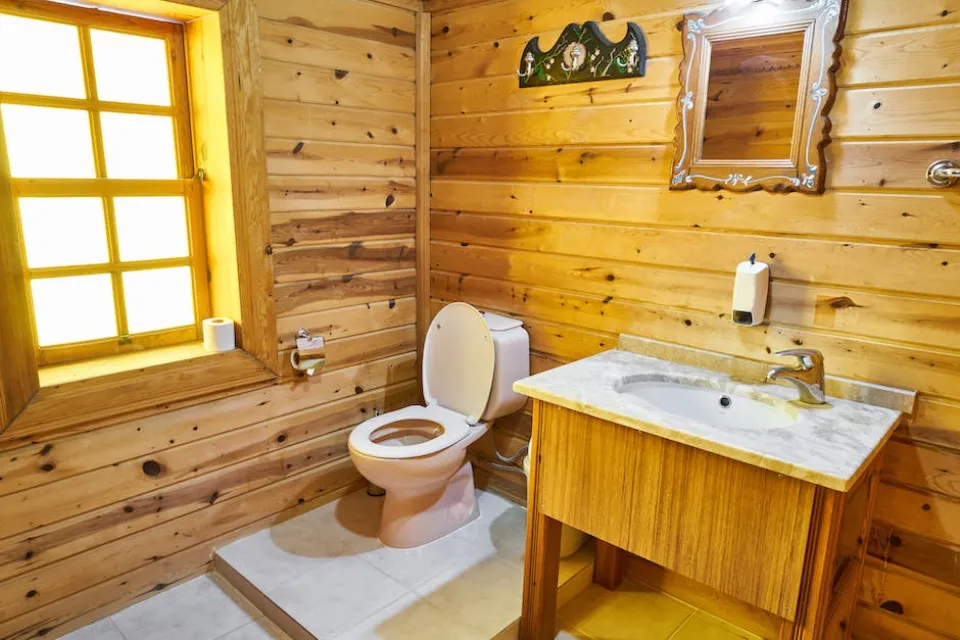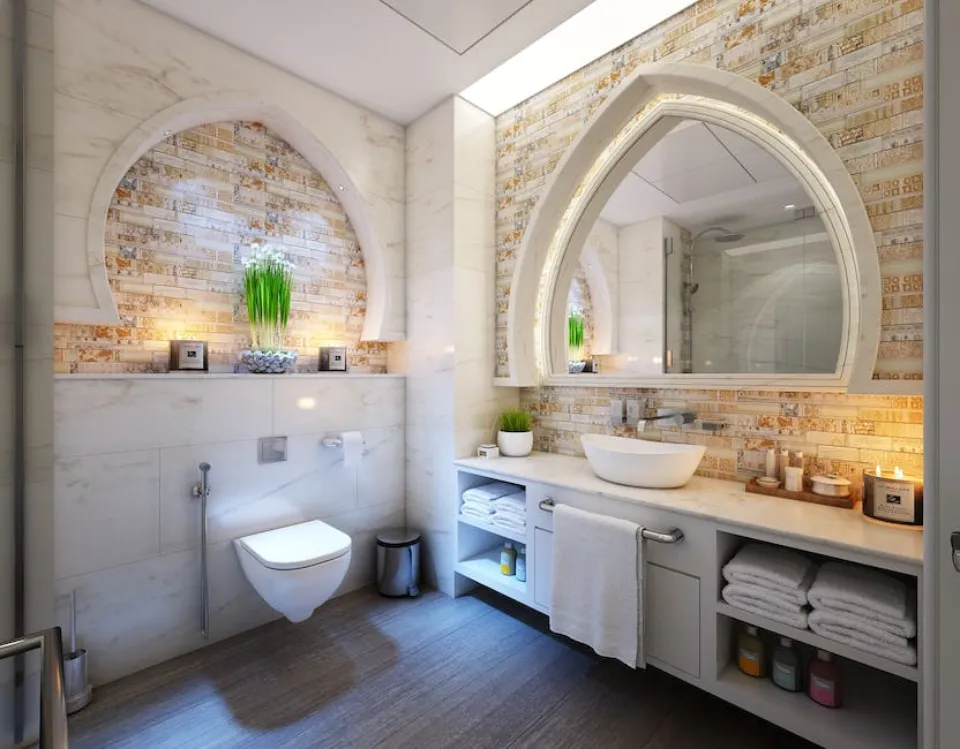While the phrase “ghost kitchen” may conjure up images of haunted houses, the reality is a bit more mundane. So, what is a ghost kitchen?
Ghost kitchens are food prep operations with no waiters, no dining room and no parking lot – really, no public presence whatsoever.
However, they are still active on apps that deliver food.
What is a Ghost Kitchen?
Ghost kitchens, also known as dark kitchens, are commercial kitchens optimized for food delivery service. Each delivery kitchen is situated in an area where there is a high demand for deliveries. The staff prepares meals from their menus that are only available for delivery because the kitchens themselves don’t have a storefront. Imagine it as a digital storefront that serves as a restaurant, with a small staff in the back of the house completing orders placed online. Your presence is digital rather than physical, which enables you to reach more clients than you ever could with just a physical location.
In comparison to brick-and-mortar, ghost kitchens offer you prime real estate at a fraction of the price. Additionally, they include fulfillment and logistics services so you can concentrate on cooking. Given that you can manage multiple virtual restaurants from a single location and have an online presence, ghost kitchens open up a world of possibilities for you to launch new brands.
The importance of mastering delivery becomes clear when you recognize how valuable a concept this is for the customer and how doing so will help you better meet their needs.
It is more important than ever for the restaurant industry to adapt to the online delivery market in order to meet consumer demand. Ghost kitchens give you access to this rapidly expanding market, which is predicted to reach $490 billion by 2025.2.
In order to remain competitive, it is vital to build a delivery service using a ghost restaurant or ghost kitchen model that works based on current demand.

How Do Ghost Kitchens Work?
To get started in a ghost kitchen or virtual kitchen, you’ll begin by renting out space at a facility where you can prep delivery orders. You will launch your restaurant brand online across various delivery apps once you have all the necessary commercial kitchen equipment set up. After that, you’ll prepare food in your kitchen that is only for deliveries while keeping an eye on incoming orders.
With the recent increase in popularity of significant food delivery services (Uber Eats, Doordash, Postmates, etc.), it’s more important now than ever to build a delivery model that works. At CloudKitchens, we provide the infrastructure and technology you need to run a successful delivery kitchen business/virtual brand.
Each existing kitchen is fully equipped with basic amenities and customizable options to best meet you and your customers’ needs. You have more flexibility than ever before, where you can get creative in the kitchen again, and try new menu ideas and concepts.
- You’ll first have access to your own ghost kitchen, which is furnished with the essential pieces of commercial kitchen gear so you can adapt it to your requirements. We’ll supply the tools you need to effectively and efficiently track your orders.
- Next, your customer places an order and no matter what delivery app they use, you’ll accept all deliveries through one single tablet. Then you’ll cook up the order from your delivery-only kitchen.
- Right there on the tablet in your kitchen, you’ll mark the order as finished, and then our staff will handle the rest to fulfill the order from your current restaurant. Every one of our delivery hubs has a processing facility on the premises, staffed by a dedicated team, which makes sure that every order is quickly delivered to the appropriate delivery driver.
- You’ll start to see 5-star reviews for your current restaurant business coming in as a result of quicker and more accurate deliveries. In case you forgot, reviews can make or break your business, so it’s critical to promote positive feedback online.
READ ABOUT How to Get Rid of Ants in the Kitchen
How Are Ghost Kitchens Developed?
Ghost kitchens are based on the fundamental shift in consumer behavior that all restaurants have been experiencing; they reduce the costs associated with dine-in restaurants by capitalizing on the increase in online orders.
The beauty of ghost kitchens is that you’re in control of most of the operational aspects other than delivery. You can easily tailor your menu so that it only focuses on food that is delivery-friendly without having to be in a busy area, hire wait staff, or be located there.
It is a small price to pay to invest in high-quality packaging and develop efficient workflows, though.

Main Types of Ghost Kitchens
Currently, there are 3 main types of ghost kitchens:
Commissary/Shared Kitchens
In this model, an entrepreneur rents the premises, installs the needed kitchen accessories, and then rents out to virtual restaurants. Because you won’t have to pay the exorbitant startup costs, the rent will be much lower, and you’ll already have all the necessary equipment, this model is reasonably priced.
These shared kitchens are typically compliant with state building codes, food service regulations, and OSHA laws, which are some of the most challenging aspects of owning a restaurant, because they are frequently owned by shrewd businesspeople or significant corporations. Being forced to share space with other restaurants is the only significant drawback.
Incubator/Pop-up Kitchens
These kitchens are connected to regular restaurants but are only used for deliveries and online orders. With this model, you incorporate delivery into your operations while keeping the processes separate to prevent the dine-in staff from becoming overburdened by the online orders.
Existing restaurants that want to test the ghost kitchen idea and look for new revenue streams will find this option to be especially helpful. The best part is that you already have the restaurant’s furniture and infrastructure; all you need to do is develop efficient workflows.
Kitchen Pods
Also referred to as “dark kitchens”, they are quite simply containers fitted with kitchen accessories. a factory-built kitchen unit that includes mechanical, electrical, plumbing, and appliance installation already done. Orders come in, food is prepared and packaged meals go out to the customer.
Traditional Restaurants Vs. Ghost Kitchens
After discussing the advantages and varieties of ghost kitchens, let’s contrast them to conventional dining establishments. The four main topics that we’ll concentrate on are service, cuisine, business strategy, and lodging.
Service
Ghost kitchens operate in a different way than traditional brick-and-mortar restaurants. Restaurants provide dining service and possibly a takeout option, whereas ghost kitchens only offer deliveries. This is the first distinction. It saves ghost kitchen operators from spending money on furniture, décor, and a traditional industry menu.
Food
Food is yet another important distinction between the two ideas. Every diner in a restaurant receives an elaborate meal that is presented beautifully.
Large quantities of food are produced quickly in ghost kitchens. They place a strong emphasis on quick customer deliveries and simple production.
Business Approach
The overall business approach also varies between traditional restaurants and ghost kitchens. One type of business that serves customers who order takeout or eat in is a restaurant.
Ghost kitchens may house several distinct businesses in the same building or a single delivery-only brand. A commercial food facility may host a single brand or many.
Accommodation
Lastly, traditional restaurants focus on marketing to bring people into the establishment and provide them with a fine dining experience. Ghost kitchens are frequently found outside of cities and concentrate on quickly preparing and delivering their food. Due to the space’s ample parking and waiting areas, delivery drivers are catered for there.

The Benefits of a Ghost Kitchen
- Expanded Presence On Third-Party Delivery Apps
Ghost kitchens allow restaurants to expand their presence on third-party delivery apps such as DoorDash, GrubHub, and Uber Eats. These apps are used by millions of users, giving your ghost kitchen access to a sizable market of potential customers. Third-party logistics companies–also known as 3PL companies–handle the deliveries so you can focus on preparing the food.
- Experiment With Different Types of Cuisine
Additionally, restaurants can experiment with various cuisines thanks to ghost kitchens. For example, an Italian restaurant can use a ghost kitchen to experiment with seafood dishes they’re considering for their menu. They can receive feedback that lets them know whether it’s a good idea without risking adverse effects on their brand image.
- Extra Space for Food Preparation
The advantage of having additional space for food preparation is appreciated by many restaurateurs. The facility has more space for preparing orders and delivering supplies because there isn’t a dining area. Because of the pandemic’s restrictions and lockdowns, restaurants were nonetheless forced to close their dining areas, so this was a key selling point for them.
- Reduce Waste And Minimize Food Costs
A ghost kitchen provides the ability to reduce food waste and minimize your food cost percentage. Restaurant owners can consolidate several of their operations into a single space, which makes it simple to share and reuse ingredients for a variety of menus.
Food operations are streamlined into one location, making inventory control and ordering supplies easier. This can increase team output and keep things going smoothly.
Are Ghost Kitchens Profitable?
Yes, ghost kitchens are successful. You can reduce expenses while increasing revenue with the aid of these delivery-only kitchens. Costs for front-of-house staff, overhead, and food waste can be reduced. You can also maximize revenue across all delivery apps and optimize your online presence. Since ghost kitchens give you a digital presence, you can increase your exposure by having several brands operate out of the same kitchen.
Practical Tips on How to Start a Ghost Kitchen
If you’re certain that ghost kitchens are the best way to increase your revenue streams, here are a few tips to get you started.
- Take an inventory of the accessories and equipment you have. You can use this to determine whether you can start with what you already have.
- For your ghost kitchen, create a brand. Decide which cuisines are most popular in your general area before concentrating on a specific food group. Meals from specialized restaurants are typically ordered by the majority of people.
- Create a basic menu with a focus on suitability and simplicity. Optimizing your business operations is the main goal of opening a ghost restaurant.
- Define your target audience. They could be your existing customers, in which case you can offer the same cuisine as your restaurant or new clientele.
- Make sure you have the technical skills necessary to handle an online delivery system. The efficiency of your deliveries will be crucial to the success of your ghost kitchen, so make sure your technology is optimized before you begin.

Frequently Asked Questions
What is a Ghost Kitchen Concept?
Without servers, a dining room, or guest parking, a kitchen is called a “ghost kitchen.” Restaurants and entrepreneurs rent ghost kitchens to prepare food for deliveries.
What is An Example of a Ghost Kitchen?
Ghost kitchens include Si’s Chicken Kitchen in Chicago. In response to the significant demand in the Chicagoland region, Si-Pie Pizzeria started selling chicken through UberEats.
What is the Difference Between a Ghost Kitchen and a Cloud Kitchen?
Similar ideas can be found in a cloud kitchen and a ghost kitchen. Both terms are interchangeable when referring to a kitchen that only prepares food for delivery.
Summary: What is a Ghost Kitchen?
In a nutshell, ghost kitchens are actual places where owners can prepare food for consumption off-site. And on apps like Grubhub and DoorDash, listings for restaurants operating out of ghost kitchens usually don’t look any different than those for brick-and-mortar operations.
Thank you for reading.



